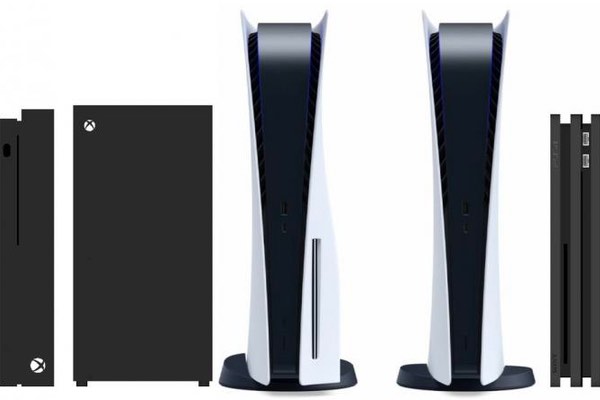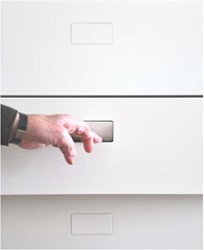No-ha Slot
Posted : admin On 3/26/2022Ook werd deze deur voorzien van het No-Ha slot, onzichtbare slot, dat trouwens op elke BREMS deur kan. Er zijn vele opties en bewerkingen mogelijk, ook worden de deuren allemaal op maat gemaakt voor u. Heeft u vragen over dit product of over onze andere producten? Info@houtfeyen.be # houtfeyen # blokkaderdeuren # binnendeuren # shoplocal. No dual storage I/O adapter (no HA RAID mode) Figure 8. System models 8231-E1C, 8231-E1D, 8231-E2C, 8231-E2D, and 8268-E1D with feature code EJ0E configuration. No Ha Slot, pai gow poker free online, french lick casino concerts, casino brisbane dress code.
Web Components is a suite of different technologies allowing you to create reusable custom elements — with their functionality encapsulated away from the rest of your code — and utilize them in your web apps.
Noha Soliman
Concepts and usage
As developers, we all know that reusing code as much as possible is a good idea. This has traditionally not been so easy for custom markup structures — think of the complex HTML (and associated style and script) you've sometimes had to write to render custom UI controls, and how using them multiple times can turn your page into a mess if you are not careful.
Nov 06, 2009 HA uses reservations to calculate the slot size and there’s no way to tell HA to ignore them without using advanced settings pre-vSphere. So there is your answer: pre-vSphere. With vSphere VMware introduced a percentage next to an amount of host failures. The percentage avoids the slot size issue as it does not use slots for admission control.
Web Components aims to solve such problems — it consists of three main technologies, which can be used together to create versatile custom elements with encapsulated functionality that can be reused wherever you like without fear of code collisions.
- Custom elements: A set of JavaScript APIs that allow you to define custom elements and their behaviour, which can then be used as desired in your user interface.
- Shadow DOM: A set of JavaScript APIs for attaching an encapsulated 'shadow' DOM tree to an element — which is rendered separately from the main document DOM — and controlling associated functionality. In this way, you can keep an element's features private, so they can be scripted and styled without the fear of collision with other parts of the document.
- HTML templates: The
<template>and<slot>elements enable you to write markup templates that are not displayed in the rendered page. These can then be reused multiple times as the basis of a custom element's structure.
The basic approach for implementing a web component generally looks something like this:
- Create a class in which you specify your web component functionality, using the ECMAScript 2015 class syntax (see Classes for more information).
- Register your new custom element using the
CustomElementRegistry.define()method, passing it the element name to be defined, the class or function in which its functionality is specified, and optionally, what element it inherits from. - If required, attach a shadow DOM to the custom element using
Element.attachShadow()method. Add child elements, event listeners, etc., to the shadow DOM using regular DOM methods. - If required, define an HTML template using
<template>and<slot>. Again use regular DOM methods to clone the template and attach it to your shadow DOM. - Use your custom element wherever you like on your page, just like you would any regular HTML element.
Tutorials
- Using custom elements
- A guide showing how to use the features of custom elements to create simple web components, as well as looking into lifecycle callbacks and some other more advanced features.
- Using shadow DOM
- A guide that looks at shadow DOM fundamentals, showing how to attach a shadow DOM to an element, add to the shadow DOM tree, style it, and more.
- Using templates and slots
- A guide showing how to define a reusable HTML structure using
<template>and<slot>elements, and then use that structure inside your web components.
Reference
Custom elements
CustomElementRegistryCustomElementRegistry.define() method used to register new custom elements so they can then be used in your document.Window.customElementsCustomElementRegistry object.
connectedCallback: Invoked when the custom element is first connected to the document's DOM.disconnectedCallback: Invoked when the custom element is disconnected from the document's DOM.adoptedCallback: Invoked when the custom element is moved to a new document.attributeChangedCallback: Invoked when one of the custom element's attributes is added, removed, or changed.
- The
isglobal HTML attribute: Allows you to specify that a standard HTML element should behave like a registered custom built-in element. - The 'is' option of the
Document.createElement()method: Allows you to create an instance of a standard HTML element that behaves like a given registered custom built-in element.
:defined: Matches any element that is defined, including built in elements and custom elements defined withCustomElementRegistry.define()).:host: Selects the shadow host of the shadow DOM containing the CSS it is used inside.:host(): Selects the shadow host of the shadow DOM containing the CSS it is used inside (so you can select a custom element from inside its shadow DOM) — but only if the selector given as the function's parameter matches the shadow host.:host-context(): Selects the shadow host of the shadow DOM containing the CSS it is used inside (so you can select a custom element from inside its shadow DOM) — but only if the selector given as the function's parameter matches the shadow host's ancestor(s) in the place it sits inside the DOM hierarchy.
::part: Represents any element within a shadow tree that has a matchingpartattribute.
Shadow DOM
ShadowRootDocumentOrShadowRootElement extensionsElement interface related to shadow DOM: - The
Element.attachShadow()method attaches a shadow DOM tree to the specified element. - The
Element.shadowRootproperty returns the shadow root attached to the specified element, ornullif there is no shadow root attached.
Node additionsNode interface relevant to shadow DOM: No-ha Slot
- The
Node.getRootNode()method returns the context object's root, which optionally includes the shadow root if it is available. - The
Node.isConnectedproperty returns a boolean indicating whether or not the Node is connected (directly or indirectly) to the context object, e.g. theDocumentobject in the case of the normal DOM, or theShadowRootin the case of a shadow DOM.
Event extensionsEvent interface related to shadow DOM: No-ha Slot Machine
Event.composed: Returns aBooleanwhich indicates whether the event will propagate across the shadow DOM boundary into the standard DOM (true), or not (false).Event.composedPath: Returns the event’s path (objects on which listeners will be invoked). This does not include nodes in shadow trees if the shadow root was created withShadowRoot.modeclosed.
HTML templates

<template>- Contains an HTML fragment that is not rendered when a containing document is initially loaded, but can be displayed at runtime using JavaScript, mainly used as the basis of custom element structures. The associated DOM interface is
HTMLTemplateElement. <slot>- A placeholder inside a web component that you can fill with your own markup, which lets you create separate DOM trees and present them together. The associated DOM interface is
HTMLSlotElement. - The
slotglobal HTML attribute - Assigns a slot in a shadow DOM shadow tree to an element.
Slotable- A mixin implemented by both
ElementandTextnodes, defining features that allow them to become the contents of an<slot>element. The mixin defines one attribute,Slotable.assignedSlot, which returns a reference to the slot the node is inserted in.
Element extensionsElement interface related to slots: 
Element.slot: Returns the name of the shadow DOM slot attached to the element.
::slotted: Matches any content that is inserted into a slot.
slotchange eventHTMLSlotElement instance (<slot> element) when the node(s) contained in that slot change.Examples
We are building up a number of examples in our web-components-examples GitHub repo. More will be added as time goes on.
Specifications
| Specification | Status | Comment |
|---|---|---|
| HTML Living Standard The definition of '<template> element' in that specification. | Living Standard | The definition of <template>. |
| HTML Living Standard The definition of 'custom elements' in that specification. | Living Standard | The definition of HTML Custom Elements. |
| DOM The definition of 'shadow trees' in that specification. | Living Standard | The definition of Shadow DOM. |
| HTML Imports | Working Draft | Initial HTML Imports definition. |
| Shadow DOM | Obsolete | Initial Shadow DOM definition. |
Browser compatibility
In general:
- Web components are supported by default in Firefox (version 63), Chrome, and Opera.
- Safari supports a number of web component features, but less than the above browsers.
- Edge is working on an implementation.
For detailed browser support of specific features, you'll have to consult the reference pages listed above.
See also
- webcomponents.org — site featuring web components examples, tutorials, and other information.
- DataFormsJS — Open source web components library — Set of Web Components that can be used to build Single Page Apps (SPA), Display JSON data from API’s and Web Services, and bind data to different elements on screen. All Web Components are plain JavaScript and require no build process.
- FAST is a web component library built by Microsoft which offers several packages to leverage depending on your project needs. Fast Element is a lightweight means to easily build performant, memory-efficient, standards-compliant Web Components. Fast Foundation is a library of Web Component classes, templates, and other utilities built on fast-element intended to be composed into registered Web Components.
- Hybrids — Open source web components library, which favors plain objects and pure functions over
classand this syntax. It provides a simple and functional API for creating custom elements. - Polymer — Google's web components framework — a set of polyfills, enhancements, and examples. Currently the easiest way to use web components cross-browser.
- Snuggsi — Easy Web Components in ~1kB Including polyfill — All you need is a browser and basic understanding of HTML, CSS, and JavaScript classes to be productive.
- Slim.js — Open source web components library — a high-performant library for rapid and easy component authoring; extensible and pluggable and cross-framework compatible.
- Stencil — Toolchain for building reusable, scalable design systems in web components.